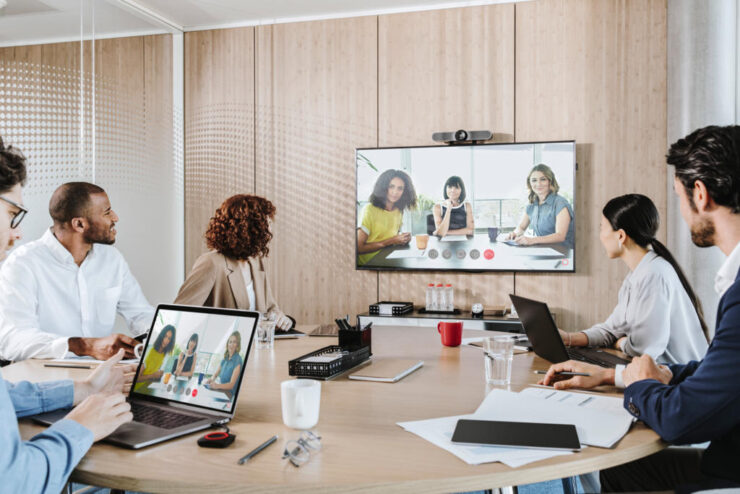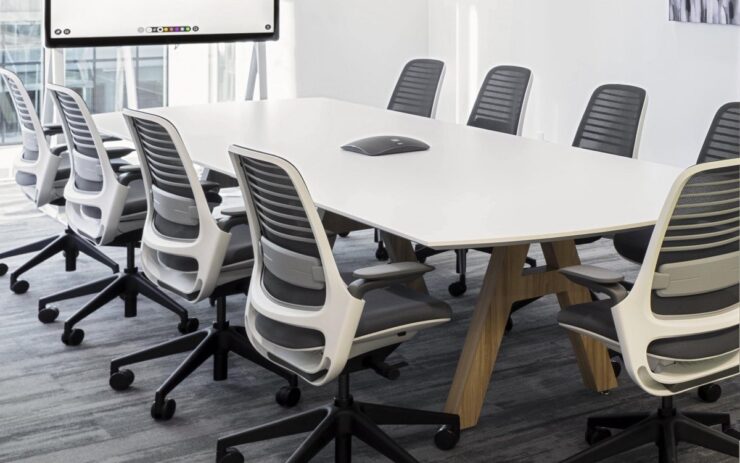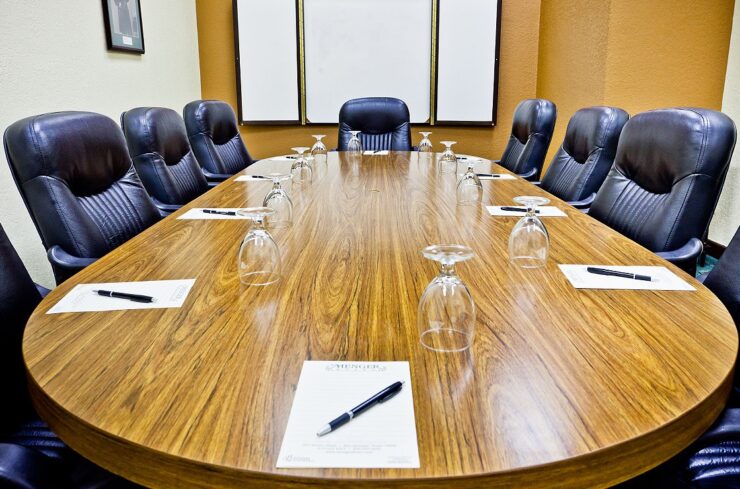Every reputable organization needs a special space where employees can meet, a place where you can see clients and investors, and just a separate room that can be used for presentations and consultations. Creating the perfect meeting space is easier said than done, and there are a lot of aspects that you need to consider if you want to create a space that will promote communication and collaboration. You can use this 2024 guide to learn how to set up and organize a meeting room, and what are the most common mistakes that you need to avoid.
1. Start by choosing a creative layout

When thinking about organizing the conference space, you should start with the layout. You probably have some basic idea of how many people can be fit there, so you need to start by creating a floor plan. There are a lot of unique ways that you can set the furniture so that everyone can see each other and they can look at the screens at the same time.
Note that you should think about several key things including the headcount, the safety and security part of the layout, meaning leaving clear paths and wheelchair accessibility; the necessities that you should add, as well as the objectives of this space. Consider different shapes of the tables and chairs that will help you get the best out of the space, and try to visually divide the room so that people can have a work designated area, as well as a place that will let them sit down and relax.
2. Utilize proper lighting

The lighting will either help your team stay focused on the job or it is going to make them feel agitated or sleepy. You need to try and implement as much natural light as possible, but you should also plan for late-night conferences or the winter season when it can be cloudy or dark throughout the day.
Try to choose white light and get as many fixtures as possible so that the attendees can choose how much light they want and have full control over the space. You can implement a dimmer switch that could help your team dim the lights if they need to do a presentation, or they can opt for full brightness if they want to see each other with ease and take notes.
3. Make sure everyone can see the screens and projectors

Implementing the right visual setups is a must, and you have to plan in a way that presentations can be done with ease. Workshops are constantly held in meeting rooms, so you need to plan ahead not only for face-to-face meetings but also for larger gatherings where people can pay attention to one screen and create solutions.
The sliding rail systems can help out a lot in this case, and you can use them to help everyone stay on the same page without having the need to change slides or erase things from the boards. Make sure you arrange the furniture in a way that everyone can see the screens and projectors without having to get up and move.
4. Pay attention to the audio systems
These spaces are going to be used for conference calls as well in addition to the presentations and brainstorming, so you need to make sure that everyone can hear everything perfectly. You can choose to opt for headsets that will allow users to use them when needed, but since this may not be the best option when you have guests in your company, it is better to think about implementing speakers and other types of audio setups.
In today’s market, you can find a lot of systems that can come with audio and visual setups combined, or you can purchase them separately. Understand what exactly do you need, how powerful you need the setup to be, and how big the space is. On the same note, set a budget up beforehand, so that you can stick to it and not go over it when you realize how many smart options there are.
5. Invest in a practical furniture

The furniture is the most important part of every conference space, and you need to find practical and durable solutions. Know that you have to invest in chars that are not going to get damaged after a few months, and you need to think about the ergonomic aspect of the seats. Some days your team may spend hours there, and you don’t want them to get uncomfortable after an hour or two.
On the same note, you should think about the height of the tables, and reclining seats that will let people relax for a bit in between meetings. As we mentioned before, you can visually divide the space and create a separate area with a coffee table and a lounge where everyone can sit down and have a cup of coffee when the meeting is not in place.
6. Don’t forget about the devices and equipment

Finally, you should pay attention to all the devices and equipment that your employees may need. You should choose an area that has a strong and stable Wi-Fi connection, and a place where people can make calls without the signal being interrupted.
You will need TVs of a good size, as well as additional AV devices that will create a better experience. There are a lot of smart gadgets that can help you complete the space, so make sure you consider all of your options. The software you choose will help everyone find better solutions and collaborate, so think about what you need to implement here as well.
This guide will help you with creating a better conference space and you should follow it if you don’t want to miss out on anything. Know that all of these things are customizable, and you should choose things that are going to help your brand develop a better working culture. If needed, collaborate with professionals that are going to help you with the design and setup. Try not to spare expenses on the thins in this area, and know that you want to invest in durability as well as practicality. Don’t forget to think about the floors as well, and if needed, talk to your team about what they want to get out of the area.

